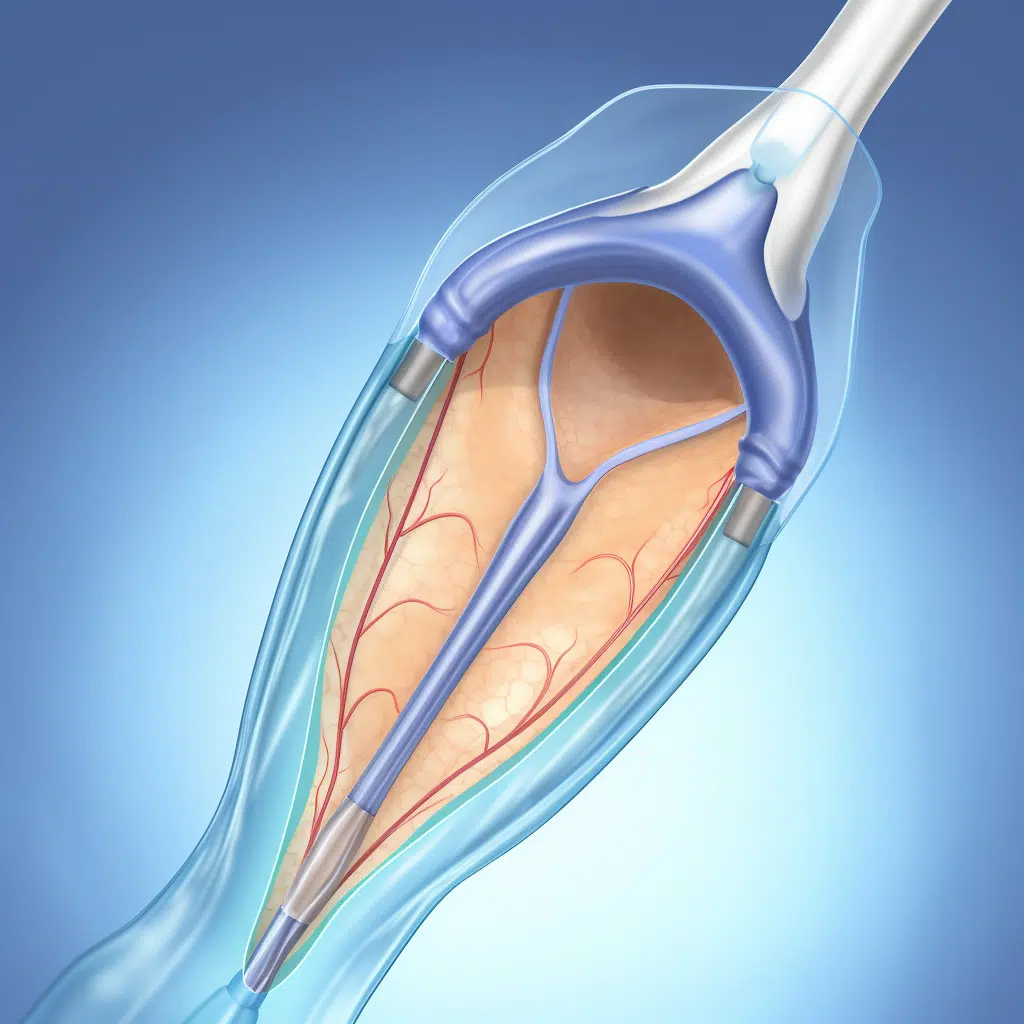Back pain and neck pain are common ailments that affect many of us. Often, these discomforts stem from our own daily routines. By reassessing and adjusting the way we conduct ourselves throughout the day, we can significantly alleviate the strain on our back.
We can adopt straightforward modifications to our daily lives that not only provide relief from chronic pain but also enhance our overall wellbeing and ability to enjoy day-to-day activities.
Implementing good practices and healthy habits can be instrumental in managing chronic back and neck pain. Keeping the spine’s natural curves in alignment is key, as it reduces the stress on your back, leading to a more pain-free experience.
By focusing on maintaining a healthy weight, engaging in regular physical activity, and avoiding tobacco and excessive processed foods, we not only support our spine’s health but also take proactive steps towards a more pain-free and active lifestyle.
Key Takeaways
- Good posture and alignment can prevent and reduce back pain.
- Lifestyle adjustments are effective in managing chronic back and neck pain.
- Maintaining a healthy weight and avoiding harmful habits contribute to spinal health.
Back Pain and Sleep
To foster recovery during rest, certain sleeping postures are recommended. If you suffer from back discomfort, here are some tips to improve your sleep quality:
- Side Sleeping: Lying on your side can assist in maintaining spine alignment. Keep your legs straight rather than tucking them in.
- Pillow Support: Placing a pillow between your knees can maintain proper hip alignment and reduce stress on the back. For those who prefer sleeping on their back, a pillow under the knees can minimize spinal arching, which often leads to pain.
- Stomach Sleeping: We advise against stomach sleeping as it typically exacerbates back pain.
- Mattress and Pillow: Use a firm mattress and a supportive pillow to help keep the spine straight.
Aside from modifying your sleep position, incorporating daily habits such as gentle exercise, yoga, or swimming can increase strength and flexibility. Aerobic activities and physical therapy can promote blood flow and help tissues heal.
Managing stress through techniques like meditation, acupuncture, or massage offers additional benefits, often leading to more restorative sleep. Remember, a knowledgeable physical therapist can provide personalized recommendations tailored to your needs.
Avoid Back Pain While Sitting
Ensuring comfort during lengthy periods of seated activity can significantly diminish the risk of experiencing back discomfort. Good posture is essential; maintain alignment by ensuring our ears, shoulders, and hips are in a straight line.
We should rest our feet flat on the ground with our thighs parallel to the surface to distribute our weight evenly.
To safeguard against pressure on the spine:
- Sit on the “sitting bones” at the base of our pelvis, not our tailbone, possibly using a cushion for elevation.
- Keep our knees at a level that doesn’t exceed the height of our hips.
Investing in proper seating can also play a pivotal role:
- Choose chairs with firm, flat seats and ample support for the lower back.
- Lumbar support is crucial; use a small pillow or a rolled-up towel for added support if our chair lacks this feature.
Stand Without Back Pain
We can alleviate back discomfort during prolonged standing with some practical strategies.
Maintain Alignment: Ensure our ears, shoulders, and hips are in line, which can mitigate back strain. Pulling in our abdomen and slightly tilting the pelvis forward also promotes a strong posture.
Shift Positions Regularly: Alternating our stance and resting a foot on an elevated surface like a stool could help reduce the pressure on our back.
Footwear Matters: Choosing shoes that provide adequate support can assist in preventing both back and knee issues.
Embrace Stretching: Gentle forward and side bends can offer a reprieve for tense muscles, acting as a reset for our posture.
Back Braces: To assist in sustaining good posture and offer both back and abdominal reinforcement, a back brace can be a supportive accessory during activities that involve extensive standing or walking.
By integrating these approaches, we aim to prevent muscle spasms and injury, while also strengthening our back and abdominal muscles. Cold packs and regular stretches further aid in keeping our muscles relaxed.
Tips to Lessen Back Discomfort During Walks
Walking is an effective low-impact exercise that can strengthen muscles and support overall health. However, when lower back pain arises, it can be daunting to maintain a walking routine. Here are some strategies to prevent back pain while walking:
- Maintain Proper Posture: Keep your head lifted and chin tucked, ensuring your feet point straight ahead.
- Supportive Footwear: Choose shoes with adequate arch support to diminish leg and back discomfort.
- Post-Walk Stretching: Engage in gentle stretching post-walk to keep the muscles flexible.
- Stay Hydrated: Drinking water supports spinal health, crucial for preventing inflammation.
Incorporating these lifestyle changes and increasing physical activity like cycling, along with walking, can further alleviate back issues and foster a pain-free exercise regimen.
Drive Comfortably Without Pain
Experiencing discomfort in your lower back during drives is an unwelcome distraction. We want to share some effective methods to ensure your trips are more enjoyable and free from pain.
- Posture: Maintain a straight spine by sitting on your pelvic bones, not slumping forward. Ensure your knees remain lower than your hips.
- Support: Utilize back and wrist braces if necessary for extra support. They can help with conditions like herniated discs and chronic back instability.
- Steering: Keep your shoulders pulled back and hold the steering wheel with both hands to lessen the strain on your arms and back.
When it comes to manual handling, like lifting, ensure you’re wearing comfortable shoes to provide a solid base, reducing undue stress on your back. And remember, for frequent heavy lifting, always bend your knees and keep the object close to your body to minimize back strain.
Commonly Asked Questions About Mitigating Back Discomfort
Back-Strengthening Routines to Prevent Discomfort
Engaging in regular physical activity is essential for maintaining a healthy back. Here are some exercises we recommend:
- Core strengthening exercises to provide better support to the back
- Low-impact aerobic activities like swimming or walking to enhance blood flow to spinal tissues
- Flexibility practices, including yoga or Pilates, for improving range of motion and reducing tension
Optimal Resting Positions for Back Relief
To minimize back strain while sleeping, consider these tips:
- Lying on your side with a pillow between your knees helps maintain spinal alignment
- If you prefer sleeping on your back, sliding a pillow under your knees can alleviate pressure
- Avoid sleeping on your stomach, as it can put undue stress on your neck and back
Lifestyle Modifications for Lower Back Pain Reduction
Alterations in daily habits can have a profound impact on back health:
- Maintain a healthy weight to decrease strain on the lumbar region
- Ensure proper posture while sitting and standing
- Incorporate regular movement into your routine to avoid prolonged sitting
Non-Pharmacological Approaches to Managing Severe Back Discomfort
Several strategies can be effective for managing intense back pain without medication:
- Apply heat or cold packs to reduce inflammation and soothe muscles
- Practice mindfulness and relaxation techniques to reduce the perception of pain
- Use support devices, such as lumbar rolls or ergonomic chairs, to reduce stress on the back
Immediate At-Home Interventions for Back Pain
For quick relief at home, try these methods:
- Apply a cold pack within the first 24-72 hours to reduce inflammation
- Transition to a heat pad to relax muscles and enhance blood flow after the initial 72 hours
- Engage in gentle stretching exercises to alleviate tension
Typical Missteps That Contribute to Back Pain and Avoidance Strategies
Common mistakes often lead to back pain, but they can be sidestepped:
- Avoid lifting heavy objects with a bent back. Bend at the knees and keep the item close to your body
- Refrain from wearing high heeled shoes that can misalign your spine
- Monitor your body mechanics during everyday activities. Make corrections as necessary












